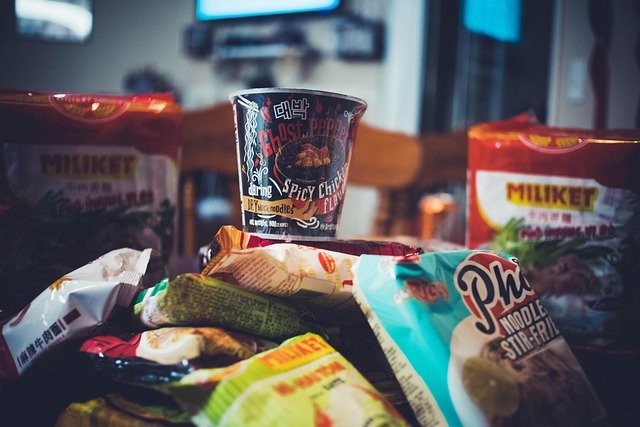Carbohydrate and Protein Balancing for Endurance and Recovery
Balancing carbohydrates and proteins helps athletes and active people sustain performance and support recovery. This overview covers practical mealplanning, mealtiming, and simple mealprep tips to manage bloodsugar, satiety, hydration, and digestion for lasting energy.

Effective fueling for endurance and recovery depends on balancing two core macronutrients: carbohydrates for immediate energy and proteins for repair and adaptation. A practical approach blends mealplanning and mealtiming so that glycogen stores are topped up before long efforts and proteins are available when muscles need rebuilding. Thoughtful mealprep and sensible portioncontrol reduce guesswork, preserve steady bloodsugar, and support overall metabolism, while attention to hydration and fiber aids digestion and satiety.
This article is for informational purposes only and should not be considered medical advice. Please consult a qualified healthcare professional for personalized guidance and treatment.
How should mealplanning include carbohydrates and proteins?
Effective mealplanning pairs carbohydrate-rich foods with a dose of proteins at each main meal to support steady energy and recovery. For endurance training, prioritize whole-grain cereals, starchy vegetables, rice, pasta, or legumes as carbohydrate sources; combine them with lean proteins such as poultry, fish, dairy, eggs, or plantbased proteins like tofu and tempeh. Including fiber from vegetables, fruits, and whole grains slows absorption, moderates bloodsugar peaks, and improves satiety—helpful for both training days and rest days.
What role do macronutrients and proteins play in performance?
Carbohydrates are the primary fuel during moderate-to-high intensity exercise because they provide quick glucose and maintain glycogen stores. Proteins supply amino acids needed for muscle repair and enzyme systems related to metabolism. Aim for a balance where carbohydrates meet energy needs for the session, while proteins (spread across meals and snacks) support synthesis and recovery. For longer sessions, increasing carbohydrate proportion before and during exercise can preserve proteins for repair rather than energy use.
When is mealtiming important for endurance and recovery?
Mealtiming affects how effectively carbs and proteins support exercise. Consume a carbohydrate-focused meal 2–4 hours before extended efforts to top up glycogen, and include a small protein portion to reduce muscle breakdown. After exercise, a recovery window of roughly 30–120 minutes is a good time for a mixed meal or snack combining carbs and proteins to replenish glycogen and begin muscle repair. Spacing protein across the day helps sustain amino acid availability and influences metabolic adaptations.
How can plantbased options, fiber, and digestion influence fuel choices?
Plantbased meal strategies can supply both carbs and proteins when planned thoughtfully. Combine complementary plant proteins (for example, legumes with grains) to improve amino acid profiles. High-fiber foods support digestion and satiety but can slow carbohydrate absorption—useful for maintaining stable bloodsugar but potentially problematic immediately before intense exercise. In pre-event meals, favor lower-fiber, easily digested carbs; reintroduce fiber-rich choices afterward to aid long-term gut health and fullness.
What practical mealprep, snacks, groceries, and portioncontrol tips help?
Keep simple staples on hand—oats, rice, whole-grain bread, canned beans, frozen vegetables, eggs, and shelf-stable nut butters—for flexible mealprep. Prepare balanced snacks (e.g., yogurt with fruit, hummus and crackers, or a smoothie with protein and banana) to manage hunger and maintain bloodsugar between sessions. Use portioncontrol strategies like plate division (half vegetables, quarter carbs, quarter proteins) or weighing staples when starting a new plan. For groceries, prioritize minimally processed items that mix easily into higher-protein and higher-carb combinations.
How do hydration, metabolism, satiety, and recovery interact with fueling?
Hydration affects digestion, perceived exertion, and metabolic rate; maintain steady fluid intake before, during, and after workouts to support nutrient transport. Properly balanced meals including proteins and fiber increase satiety, reducing reliance on less nutritious snacks that can destabilize bloodsugar. Metabolism is influenced by total energy balance and the timing of macronutrients—adequate calories and distributed protein help preserve lean mass, while targeted carbohydrate intake supports repeated endurance efforts. Monitor how your body responds and adjust hydration and macronutrient ratios accordingly.
Conclusion Balancing carbohydrates and proteins for endurance and recovery is a practical blend of mealplanning, sensible mealtiming, and basic mealprep. Prioritize whole-food carbohydrates for energy, spread proteins across meals and snacks to support repair, and use fiber and portioncontrol to stabilize bloodsugar and satiety. Hydration and attention to digestion and metabolism complete the picture, letting athletes and active people adapt fueling to different sessions and recovery needs.





